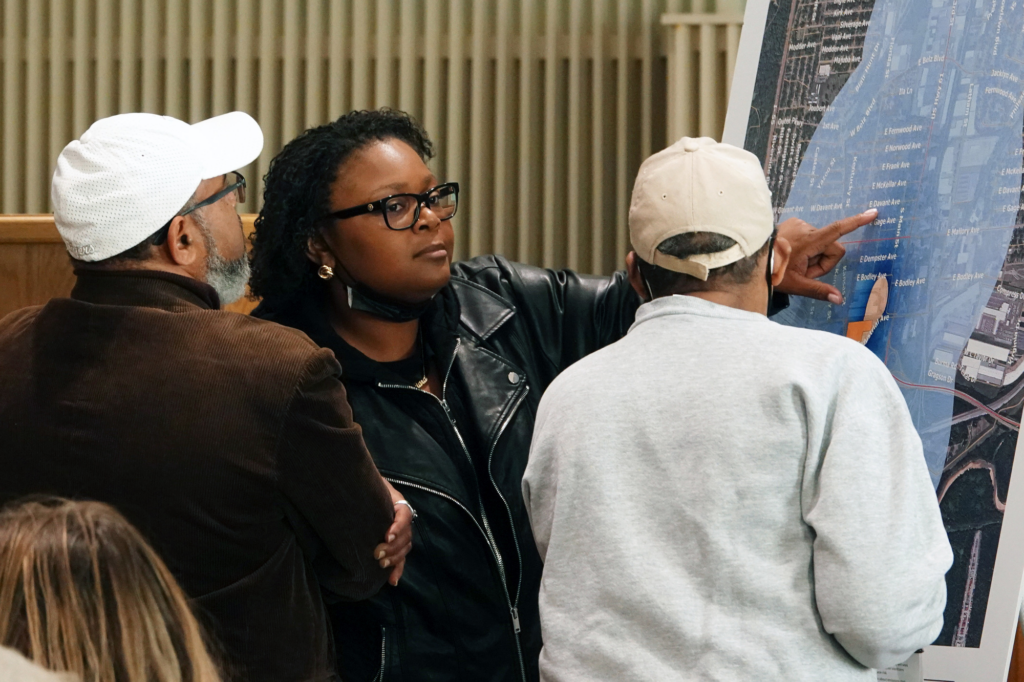
By Sharon Franklin.
For Rose Sims and Lettie White, residents of South Memphis, Tennessee, despite it being a sunny, spring day in their neighborhood, they make a point to stay inside as much as possible. This is because of the dangerous amounts of a toxic, cancer-causing gas, ethylene oxide (EtO), that is being emitted by the Sterilization Services of Tennessee, a medical equipment sterilization facility. EtO is linked to leukemia, lymphoma, breast cancer, and stomach cancer, and recently EPA announced that the colorless and odorless gas is 60 times more toxic than they previously thought. The Southern Environmental Law Center (SELC) recently reported on this environmental injustice issue.
Earlier this year, EPA officials held a meeting and cautioned that the Sterilization Services of Tennessee facility was creating an “‘elevated’” cancer risk for people living nearby.” At this meeting, scientists presented maps showing what areas face the highest risks, which, unfortunately for Ms. Sims and Ms. White, were where their homes fell. After receiving this information, Ms. White said she“was devastated;” “I used to go outside to plant my garden and to cut my yard. I can’t do that anymore.” Ms. Sims said shewas afraid, frustrated, scared. “Now I go in and out of my house, but as far as cutting yards and just hanging out and enjoying and barbecuingand being with my family, I would never.”In the months since the meeting, Ms. Sims’ frustration and fear has grown while local health officials have refused to act.
How Has Sterilization Services of Tennessee and Shelby County Health Department Responded?
For months, they have ignored calls to reduce the plant’s EtO pollution from the Memphis City Council, the Shelby County Commission, community organizations, and families living nearby. The plant continues to operate 24 hours a day, seven days a week, even though similar facilities in other states have taken voluntary action to reduce ethylene oxide.
What is EPA’s Position on Ethylene Oxide Protections?
In April, EPA took a key step toward better regulating EtO emissions in announcing a draft rule that aims to reduce fugitive EtO emissions by 80 percent. This rule would force facilities that releaseEtO to implement already-available technologies to better protect nearby communities. The draft rule was open for public comment until June 27, 2023. One comment to note is from the American Hospital Association (AHA) who offered comments stating, “With device sterilization capabilities already at or near capacity across the country, we strongly encourage the agency to consider employing its traditional three-year implementation timeline to the standards if made final. This will allow these facilities more time to come into compliance prior to enforcement in an effort to help prevent the closure, temporary or permanent, of any of these facilities.”
What is the Community Saying?
KeShaun Pearson from Memphis Community Against Pollution said, “Sterilization Services of Tennessee is continuing this legacy of environmental injustice by ignoring community members’ pleas for relief… And by allowing the Sterilization Services facility to continue pumping toxic gas into the air, the Shelby County Health Department is sending the message that it’s okay to inflict harm on Black communities, because of discriminatory practices like redlining that allowed polluters to take over historic and vibrant Black neighborhoods.”
While the Shelby County Health Department drags its feet, residents like Ms. Sims can’t help but wonder if it is because Mallory Heights is in a predominantly Black neighborhood that is surrounded by polluting industrial facilities. Would the Sterilization Services of Tennessee still be releasing EtO if it was in another part of the county?
SELC and Memphis Community Against Pollution sent a letter to Shelby County Health Department urging the agency to use its emergency powers to force the facility to lower its EtO emissions. However, the health department refused to act, even though “Memphis Muni. Code § 9-12-9(A) states where there is not a generalized condition of air pollution, the Health Officer may issue an emergency order if he ‘finds that emissions from the operation of one or more air contaminant sources is causing imminent danger to human health or safety.’ Id. § 9-12-9. The SELC and the Memphis Community Against Pollution concluded that the Shelby County Health Department not only can act, but must act to protect Memphis families from a health emergency.







